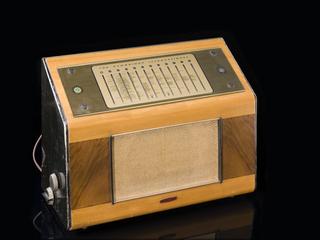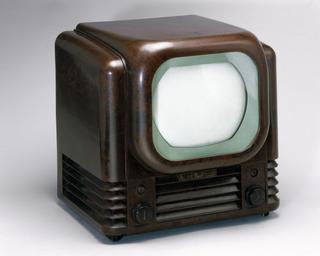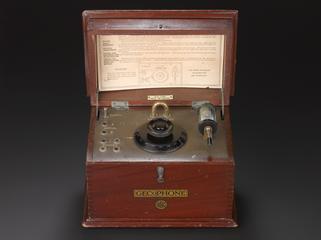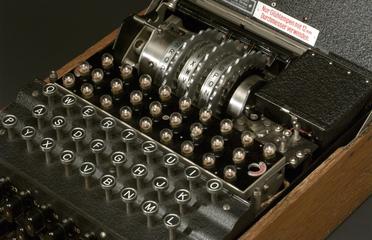








Flat steel-spring (or watch-spring) coherer, unknown maker, England, 1894. Used by Oliver Lodge in his lecture before the Royal Institution on 1 June 1894 on ‘The work of Hertz and his successors’
Flat steel-spring (or watch-spring) coherer, unknown maker, England, 1894.
The word 'coherer' was coined by Oliver Lodge when using his 'knob' or spark-gap detector in 1889. The gap between the two electrodes closed when sparks were created nearby, changing its condition from high resistance to low resistance and thereby detecting the presence of Hertzian waves. Lodge described the electrodes as having cohered. 'Coherer' eventually became the name for all non-electronic detectors, regardles of how they worked. The imperfect contact between two dissimilar materials also acted as a detector and Lodge used this adjustable steel-spring detector in his 1894 lectures on the work of Hertz.
Details
- Category:
- Radio Communication
- Object Number:
- 1942-37
- Materials:
- wood (unidentified), bakelite and copper (alloy)
- Measurements:
-
overall: 70 mm x 200 mm x 115 mm, .344 kg
- type:
- coherer
- credit:
- Donated by E. E. and T. H. Robinson




